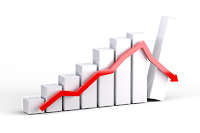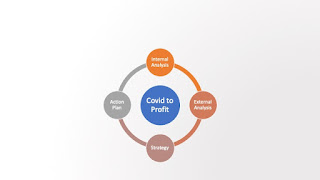How to understand your market and profit from it.
 Life is in stages when we are born, we start out as babies,
then toddlers, then children etc. until we reach adulthood. Now for each of
these stages our needs, expectations are different and good parenting is all
about understanding these differences and responding appropriately.
Life is in stages when we are born, we start out as babies,
then toddlers, then children etc. until we reach adulthood. Now for each of
these stages our needs, expectations are different and good parenting is all
about understanding these differences and responding appropriately.
In almost a similar manner the markets in which we operate as
businesses also have its stages and each stage has its own nuances, your success
as a business is all about understanding these stages and being able to respond
appropriately.
I discussed the different stages of a market with Abayomi
Olarinmoye, a partner at Verraki (former Accenture Nigeria), we spoke about how
to understand the market stages, how to play in them, what to do if you have
yourself entering a market at the wrong time and lots more.
Q1: Please introduce yourself to us.
I am Abayomi, a partner at Verraki, a technology, advisory
and ventures company focused on transforming Africa and changing our
continent’s narrative. We work across twelve sectors of the economy covering
financial services, telecommunications, energy, consumer goods, transportation,
public sector and other sectors. I have also had a stint as an entrepreneur in
the food space.
Q2: Human beings have their stages in life: baby, toddler, childhood,
teenage, young adult etc. We are told that in economics that markets also have
their stages, can you please explain the different stages?
Markets have lifecycles just like products do. The four broad
stages of a market are -:
(i) Infancy
(ii) Growth
(iii) Maturity/Saturation
(iv) Decline.
Infancy – the products are relatively new, awareness and the acceptance are on the rise, adoption is gradual, people are beginning to
understand the products and suppliers of the products and related support
services are emerging or getting established within the ecosystem.
A good example of this would be the GSM market at inception.
Growth- The rate of uptake is on a faster rise, volumes are
growing, there are more entrants into the market, demand is relatively higher
than supply, new investments are being made in the production, distribution and
promotion of the products, the products are then getting standardized in terms
of quality specifications.
The GSM market at the time secondary players entered GLO
entered the market will be a good example of this.
Maturity/Saturation - At this stage, the rate of growth
begins to slow down, demand is flattening out and there is enough supply to
meet the needs of the users. Players are beginning to compete on quality and
price basis and innovation may be on the decline. Several products may fail, or
competition may fizzle out while other players get established.
An example of this would be the Print media, apart from the
oldies there are hardly any newspapers rather what we are experiencing is an upsurge in Online media and publications.
Decline: The volumes are on the decline, competition may be
thinning out, the product becomes a near commodity and technology may be
reducing the relevance of the product or service.
An example of this would be the Photography market, people no
longer print as much as before and with the advent of the telephone with very
good cameras, only the professionals now use the camera.
To properly assess the stage that a market is in, the market
dynamics need to be assessed. For example, are the market volumes or potential
growing, are people finding more uses for the product or service, are we seeing
product extensions and variations, is technology disrupting how the product is
produced, delivered or used, is technology making the market more efficient i.e
stripping out costs, what are the growth drivers and are they on the rise or
declining, are substitute products growing at a faster rate?
May I sound a note of caution though, except it is a
fad-driven market, markets are not that elastic i.e. it takes a while for a
market to reach saturation point and then begin to decline. Also, since we are
considering the Nigerian market and possibly, a localized sub-set of that, I
would also say that we have a very diverse and growing population in Nigeria.
Latest estimates from UNPF say we are about 201 million! Of
which more than 10% possibly reside around Lagos/Ogun environs. That's over
twenty million people who are potential users/buyers of products and services.
I am not certain that we have reached a saturation point for most markets in
Africa! Entrepreneurs are advised not to give up too soon but to analyze the
market critically before concluding that it is time to bail out.
Conventional wisdom dictates that no new entrant enters a
market when it is declining, however, realities and successful examples have
turned this theory on its head. It is possible to extend the lifecycle of the market provided the product need is not becoming obsolete and regulations are
not working against its growth.
What do I mean? It is possible to enter a mature market with
a new technology that enables you to cut out costs involved in producing and
delivering the product significantly. It is also possible to find new use cases
for the same products extending it into a new segment of the market. It is also
possible to have a geographic variation where you are moving into an
unpenetrated or saturated region.
Q3: More often than not SME's just start their businesses without
considering whether the market is suitable for them, why should an SME bother
with the stage of the market of their interest?
An SME needs to be very aware of the stage and state of the market he/she is getting into so that he can line up the proper arsenals for
the marketing penetration (battle!). The market’s lifecycle stage would
influence how much capital to be deployed and where to spend it e.g if a market
is getting saturated, existing and established players are likely to be
watching their costs critically and thereby competing on a cost basis.
A new
entrant should, therefore, consider how to enter the market more efficiently
and with a better cost profile than the established players. I would consider
outsourcing all non-critical factors of production, I would deploy technology
to further cut costs and would subscribe to some of my services from a shared
platform so that I can pay per use and therefore get more mileage for my spend.
An entrant can still make good money in a declining market
provided the market is not going obsolete eg the typewriter /typing services
market. How? New users can be found for the same product (eg baking soda), new
audiences can be found (LP players), and an entrant can enter, buy up other
players and make a consolidation play.
Any technology that allows the product
or service to be provided cheaply, that extends the use cases and that takes
the product into new markets would be very helpful.
Q4: Whereas big organizations have the means to hire researchers to help
them determine the situation in their markets, how can an SME do this? What
should they be looking out for?
An SME can get market research done professionally by experts
but at a much lower cost. However, if the said entrepreneur would like to do it
in-house, he/she would need to :
· Talk to established market players to get a sense of
typical market volumes and velocity (the speed at which products are bought and
how long it takes from production to getting the product to the end user. Other
useful information around market trends and growth levers
· Collect data and do desk research from/with relevant
institutions eg FIIRO, SON, Customs, Tax authorities, CAC (Business
Registration desk), MAN etc
· Market Immersion/apprenticeship.Go out there and
spend a day or a week or a month shadowing those who are already involved in
this business.
Q5: Imagine there is a business
owner out there reading this and saying to him/her self, “it is clear to me
that I entered the market at a wrong time, and it is affecting my business what
can I do now?”
·
An SME needs to determine if growth is still possible
in that market. Identify growth levers and assess realistically. Observe what
the competition is doing particularly the most successful ones in the same
segment. What are they doing differently?
·
Review and ruthlessly strip out costs across the value
chain
· Carry out a product/business/value reengineering
exercise putting innovation at the centre. Ask yourself what innovation can I
bring that will raise the stakes or change the dynamics of this market or
revolutionize my space/segment? And finally, ask yourself, can I sell and
recoup my losses? Do I have existing assets that can lend themselves to a
quicker entry into a related market?
·
Please note that it is difficult to brand your way out
of a sinkhole. No point spending unnecessarily
Q6: Is there any other information you think an SME should be aware of
regarding this topic that we have not covered?
Customer intimacy and engagement is very key. Know who is
buying your product and why. Continually look for more creative ways to deliver
value to the customer as efficiently as you can. Don’t waste money
over-delivering certain features while ignoring the most critical purchase
levers.
Conclusion
There you have it, is your market in its infancy, or is yours
a growth market, are you playing in a mature market or are you sensing that you
are in a declining market? Don't be too quick to make a judgement call as it
might still be possible to make it if you change your strategy.
Share your thoughts with us and who knows our feedback might
just set you off on the right path to profitability.


Comments
Post a Comment